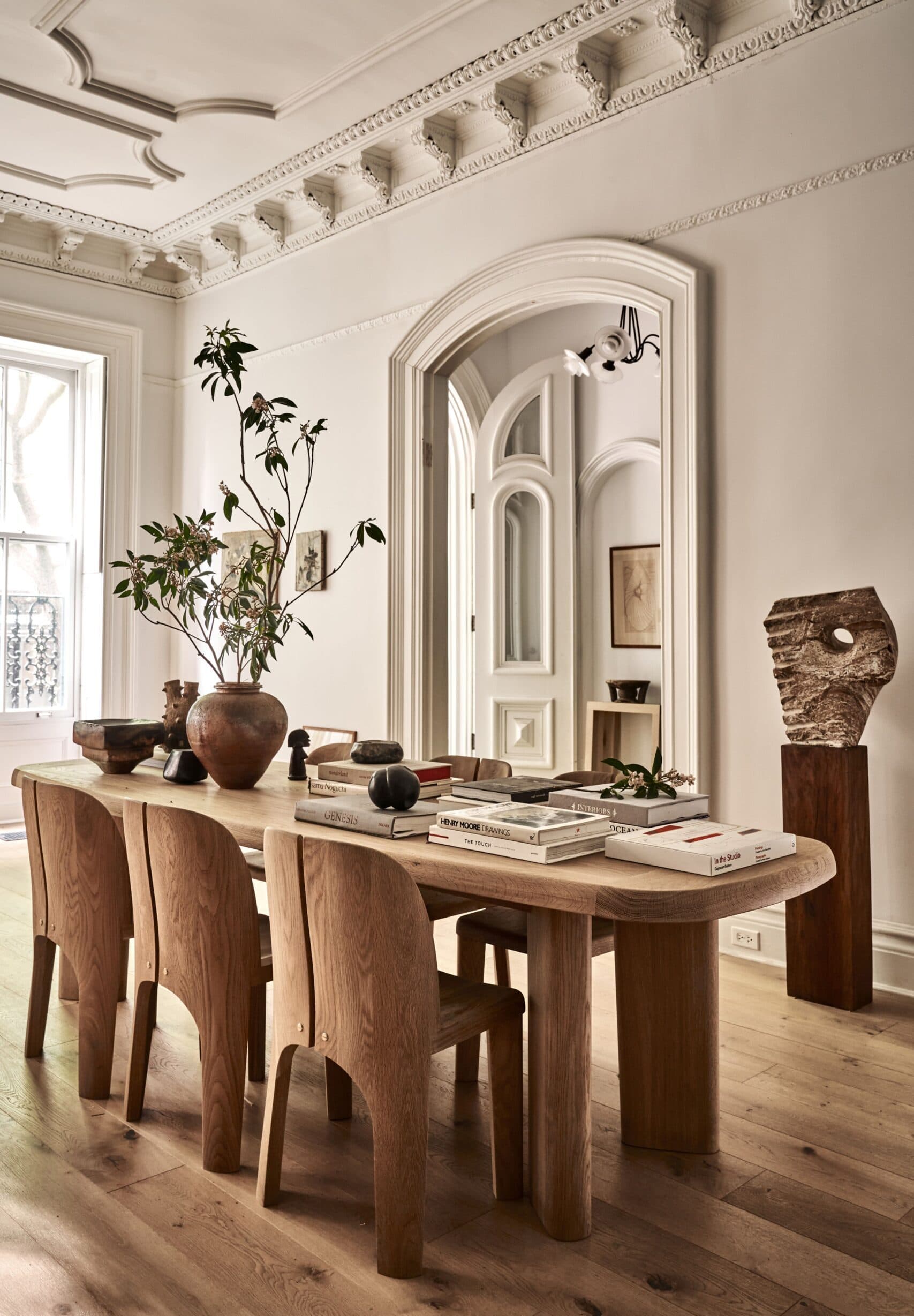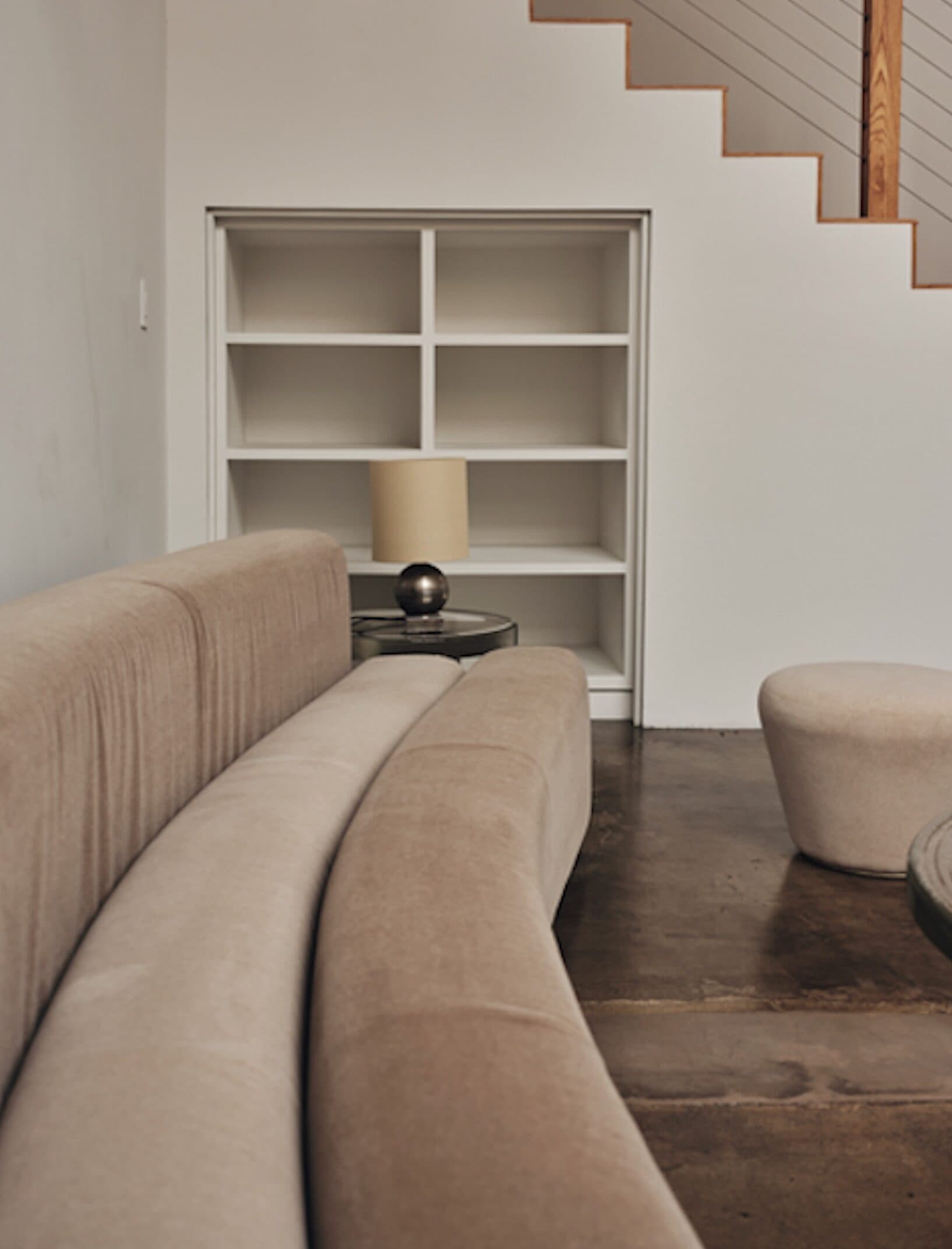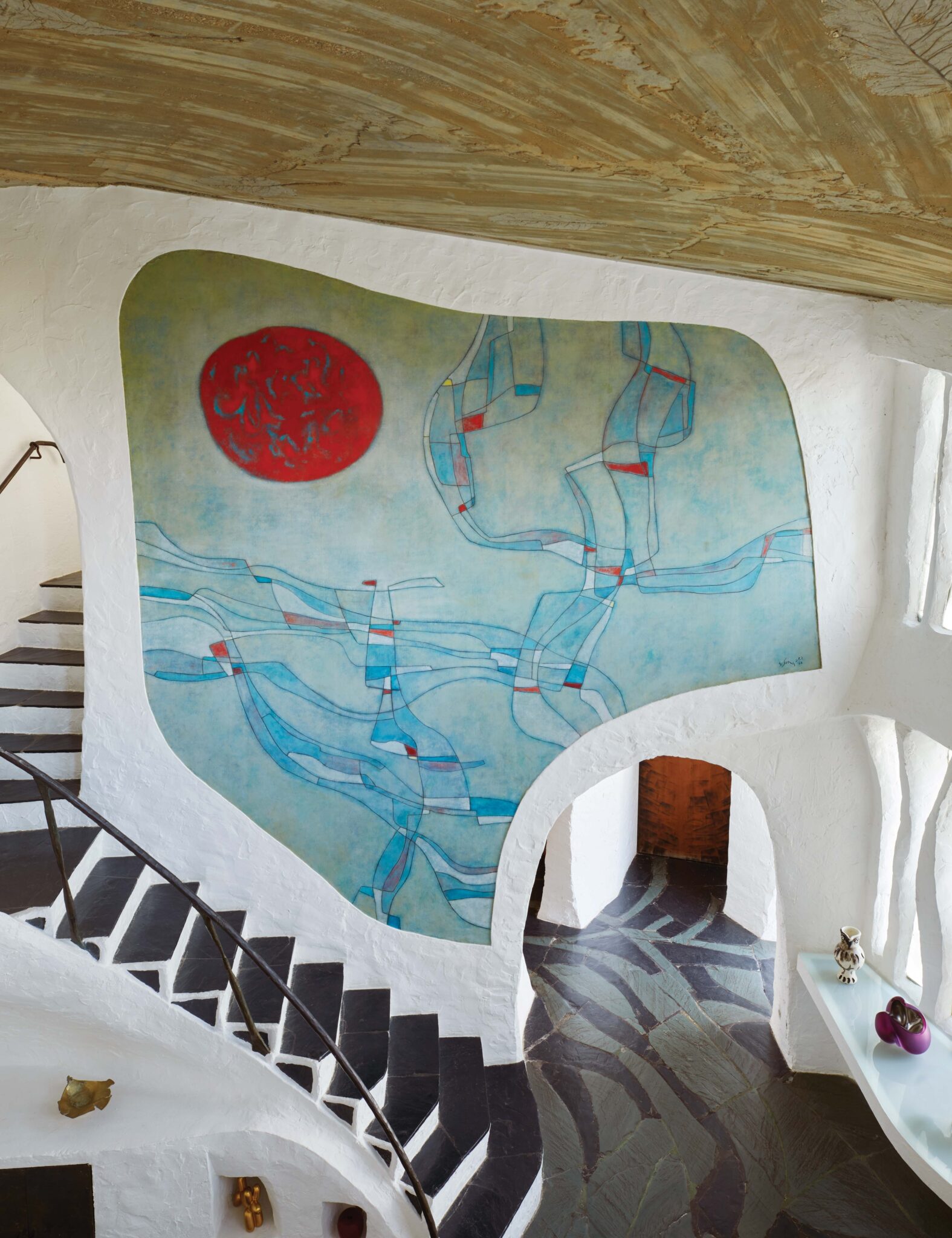
Interiors stylist Colin King has always been keenly aware of the spaces around him. “I loved the expressiveness that I could emote without having to say anything and the musicality of moving through space,” says the onetime professional dancer. After moving from one coast to another—and back again—he found his calling in the meditative and intuitive practice of visual curation, working for designer Tom Delavan before striking out on his own to launch a thriving business.
In his debut book, Arranging Things (Rizzoli), King provides a peek into his world and provides readers with the tools needed to develop their own unique style and create an environment conducive to their individual lifestyles. We sat down with King to pick his brain about his timeless and serene interior projects, his go-to styling tools, and the challenges of distilling a room into a cohesive aesthetic.

Arranging Things by Colin King, $45, barnesandnoble.com
Rich Stapleton / Courtesy of RizzoliFREDERIC: How did the idea for Arranging Things come about?
Colin King: I was styling for so many clients and I had never seen my own house in the daylight! I was up at 5:00 AM going to the flower market and home way after dark. The pandemic was the first time I was really left with my own space for an extended time and was able to style for myself. I made a commitment to create a daily still life out of everyday objects, food, or whatever I could find. I quickly began to realize the power of objects and it became less of a job and more of a practice, like meditation.
DO YOU HAVE A SET OF GUIDING PRINCIPLES YOU APPROACH YOUR PROJECTS WITH?
It took me a long time to trust the intuitive process of styling. I oftentimes would over prepare for jobs and then be disappointed that it didn’t look the way I wanted it to. I still prepare for every job, every home, and every client, but leaving space for spontaneity and magic is just as important. I also love to start small. There is a great metaphor author Anne Lamott used in her book Bird by Bird: When driving at night, you only need to see a few feet in front of you to get home. I focus on chipping away, step by step, small vignette by small vignette, to create an experience.

An electric-blue sofa pops in a room styled for Anthropologie.
Adrian GautWOULD YOU SAY YOU HAVE MORE OF A TOP-DOWN OR GROUND-UP APPROACH?
I like to clear all the surfaces, take away all the textiles, really start with the base of the room and listen to what the room wants to be, and then start to slowly add. In the book, I compare it to a jigsaw puzzle. You separate all the edges out, then you build out the border, and then you start to go in color by color. It’s about figuring it out as it progresses. I really enjoy starting blank—although there’s no such thing as a blank canvas, especially in New York. You just need to think outside the box.
WHAT ARE FIVE ITEMS YOU ALWAYS KEEP IN YOUR STYLIST’S ARSENAL?
I like to start with books. They can act as risers and pedestals for different objects if I need varying heights, or they can just make that space feel un-styled and lived in. I also love bowls of all sizes; the shallowness of a bowl grounds whatever it’s set upon. I’ve started bringing my own bedding on shoots. The bed is such a massive surface; if it’s not styled well it can be an eyesore and completely distract from rest of the beauty in the room. And then I also love a good vase. I bring one with a nice open mouth for flowers. I love bringing fruit on set as well—I think it’s a beautiful way to include color, and just allude to a humanness of a space.
-

Clean lines in a Manhattan townhouse designed by Studio Giancarlo Valle.
Stephen Kent Johnson -

King mixed a variety of neutral textures in this space styled for Roman and Williams.
Gentl & Hyers
YOU MENTIONED IN YOUR BOOK YOU LOVE USING PEARS. WHY IS THAT?
I love the texture of a pear, especially those freckled Bosc pears. Their shape is so unique—they feel like their own character. I love that they are never symmetrical; they’re never the same. They’re very sculptural.
DO YOU HAVE A GO-TO FLOWER OR PLANT?
Besides art, I think nature is one of my biggest forms of reference and inspiration. I would say my favorite plant of all time, although the blooming is so random and short lived, is a smoke bush. When it blooms, it’s cloud-like and vibrant and bizarre, unlike anything you’ve ever seen.
Poppies are also a great flower to use. I think there’s something kind of quirky about their stem. Even when they’re not blossoming, they are formally very striking. I love tulips and ranunculus, too. But the thing I love the most is a foraged branch, because of its gestural nature. The branches you get at the flower market don’t have the same expansive characteristics as a branch you find in the wild.
ARE THERE SPACES YOU THINK ARE OFTEN OVERLOOKED WHEN ARRANGING THINGS AROUND THE HOUSE?
A lot of times there’s too much emphasis on one place, like millwork or shelving, that people obsess over and feel like they need to fill. But the areas I find most overlooked are the transition spaces, whether it’s a hallway or a threshold to a room. I love displaying objects on a windowsill or a ledge to activate the spaces that aren’t necessarily obvious.
YOU HAVE A VERY CONSCIOUS APPROACH TO USING EMPTY SPACE.
I think there’s a lot of fear around empty space. Often we buy things because we’re uncomfortable with a void. However, if you just wait, there’s this invitation, this potential that you’ll find the right thing, or you’ll realize you like living with less. Right now, I’m working with a client that needs a new bed, but she keeps pushing back and saying, “I love sleeping on the floor! It’s so fun!” I think there is a real attraction to an unfinished, just-moved-in kind of feeling where there is no clutter yet. There’s this stillness. There’s quiet. And it makes every object feel that much more important.
Growing up in a dance studio, I was never afraid of empty space. It felt very welcoming until I moved into this apartment where I was like, oh my God, I moved into a gymnasium, and I was so scared that I wasn’t going to be able to make it feel like home. By slowly adding in pieces, I realized I didn’t need more things, just bigger things, so I scaled up the sofa and the dining table.
-

“Unfilled shelves signal new opportunities,” King writes in his book.
Rich Stapleton -

A shot styled for West Elm.
Pippa Drummond
WHAT ARE THE BIGGEST MISTAKES THAT PEOPLE MAKE WHEN STYLING A ROOM?
People tend to think that they need to buy something new, when in fact they might just need to alter or rearrange items they already own. When I look for inspiration, I’m not necessarily looking at the pieces— I’m looking at their compositions and how they fill space. So I might not be able to afford a Giacometti or a Calder, but I’ll realize I have something that height and shape, and I’ll build from there. Instead of focusing so much on the maker or the brand, focus instead on playing with layout. There’s so much power in arranging.
WHAT’S INSPIRING YOU RIGHT NOW?
I just got Rick Rubin’s new book The Creative Act: A Way of Being. It’s so dense it is with helpful insight for creatives. I’ve also been doing a lot of artist studio visits recently—there’s something about functionality and the innovation, the practicality of having everything arranged to suit their utilitarian and aesthetic needs, that really appeals to me. Visiting the homes of Luis Barragan and Donald Judd always inspires me—they are the places I go back to time and time again. And when it comes to contemporary design, Atelier AM, founded by Alexandra and Michael Misczynski, is my North Star. I just think their work is timeless and fresh.

Books and ceramics in a tightly curated palette accent a room by Studio Giancarlo Valle.
Stephen Kent Johnson
















